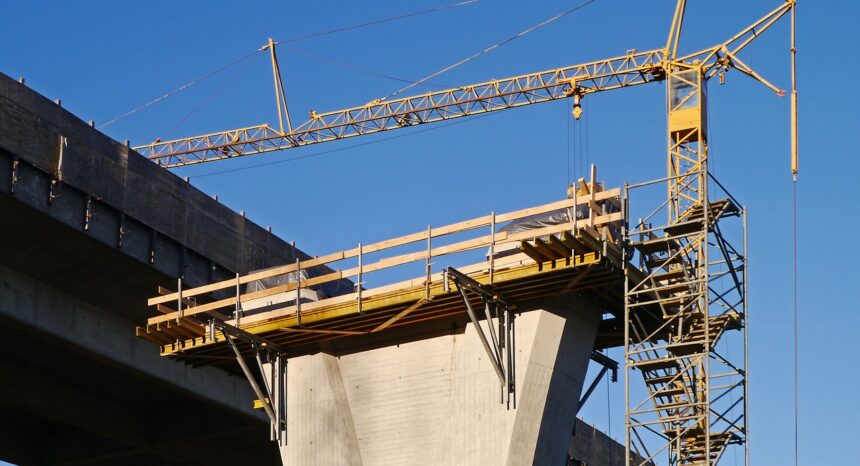It’s no exaggeration to say that U.S. infrastructure has seen better days. Among other problems, many bridges are crumbling and the electrical grid is fragile and outdated. The most recent American Society of Civil Engineers’ report card gave the country’s infrastructure an overall D-plus grade, with particularly low scores for inland waterways and levees (D-minus); roads, public transit and drinking water systems all earned Ds. To return to a state of good repair by 2020, the society estimated the United States would have to invest $3.6 trillion.
President Obama has made infrastructure one of his administration’s priorities — the 2009 stimulus bill included more than $100 billion for public-works projects, but that was only a tiny fraction of the $2.2 trillion the ASCE said was then required (the price tag has since increased more than 60%). The President renewed his call for infrastructure investments in 2010 and most recently in March 2013.
A particularly thorny problem is funding. The gasoline tax was intended to fund highway construction and repair, but even as vehicle miles traveled have climbed, inflation and political resistance have eaten away at its value. The Congressional Budget Office has repeatedly warned that the highway trust fund will soon become insolvent unless spending is cut, gas taxes raised, or new funding sources are established. One option is mileage-based user fees. In the absence of political consensus, Congress has chosen quick fixes, including taking money from the U.S. general fund. Some state leaders have gone so far as to cancel major infrastructure projects that have significant long-term benefits rather than raise gas taxes.
Spending on infrastructure isn’t just money spent, however. Improved roads could get commuters to work faster, a new rail line or highway can allow companies to flourish, and a more robust electrical-distribution system could save businesses money. A 2012 study from the Federal Reserve Bank of San Francisco found that federal investments in infrastructure work had a positive “multiplier effect” on local GDP both immediately before projects and as long as eight years after.
A 2013 metastudy in the Journal of Economic Surveys, “What Have We Learned from Three Decades of Research on the Productivity of Public Capital?” analyzes the impact of public-capital investments on productivity — the way infrastructure spending affects economic growth in developed nations (members of OECD.) The researchers, Pedro R.D. Bom and Jenny E. Ligthart, examined 68 studies published between 1983 and 2008. The studies included a total of 578 estimates, which ranged from positive (investments increase productivity) to negative (they decrease it).
The study’s findings include:
- Taking into account factors such as the depreciation rate and long-term interest rates, the results suggest that, “from a macroeconomic point of view, public investment in this type of public capital should be encouraged.” The researchers conclude that infrastructure spending is “undersupplied” in developed countries.
- “The average output elasticity of public capital amounts to 0.106, after correcting for publication bias.” Thus for every $10 of investment by the national government, productivity increases an additional $1.06.
- Public capital investments have the most benefit in the long term: “The short-run output elasticity of public capital installed by the national government is only 0.083. In the long run, however, if only core public capital is considered that is provided by lower levels of government, the output elasticity of public capital goes up to 0.193.” A $10 investment would thus increase productivity by an additional $1.93.
- “Taking into account that the stock of public capital amounts to about 50% of GDP in OECD countries, a short-run output elasticity of 0.083 implies a marginal return of public capital of about 16%.”
The researchers note that the indirect effect of public capital on employment and private capital formation, which are held constant in the estimation, are not accounted for in their metastudy.
Related research: A 2012 report from the RAND Corporation, “Mileage-Based User Fees for Transportation Funding,” gives an overview of mileage fee system designs and strategies for transitioning from gas taxes. For states or localities that are just beginning to consider the idea of mileage fees, awareness of these strategies can help determine whether shifting from fuel taxes to mileage fees merits further consideration. For jurisdictions already engaged in detailed assessments of mileage fees, these concepts can help refine system design — with the ultimate aim of reducing costs and building public support.
Also of interest is a 2012 working paper from the International Monetary Fund, “Too Much Finance?” examined the relationship between the size of the financial-services sector — the antithesis of public-structure investments — and economic growth. It found that there is “positive and robust correlation between financial depth and economic growth in countries with small and intermediate financial sectors, but we also show that there is a threshold (which we estimate to be at around 80-100% of GDP) above which finance starts having a negative effect on economic growth.” Potential reasons include increased economic volatility, a greater probability of financial crises, and the misallocation of resources even under good economic conditions.
Keywords: infrastructure, metastudy


Expert Commentary